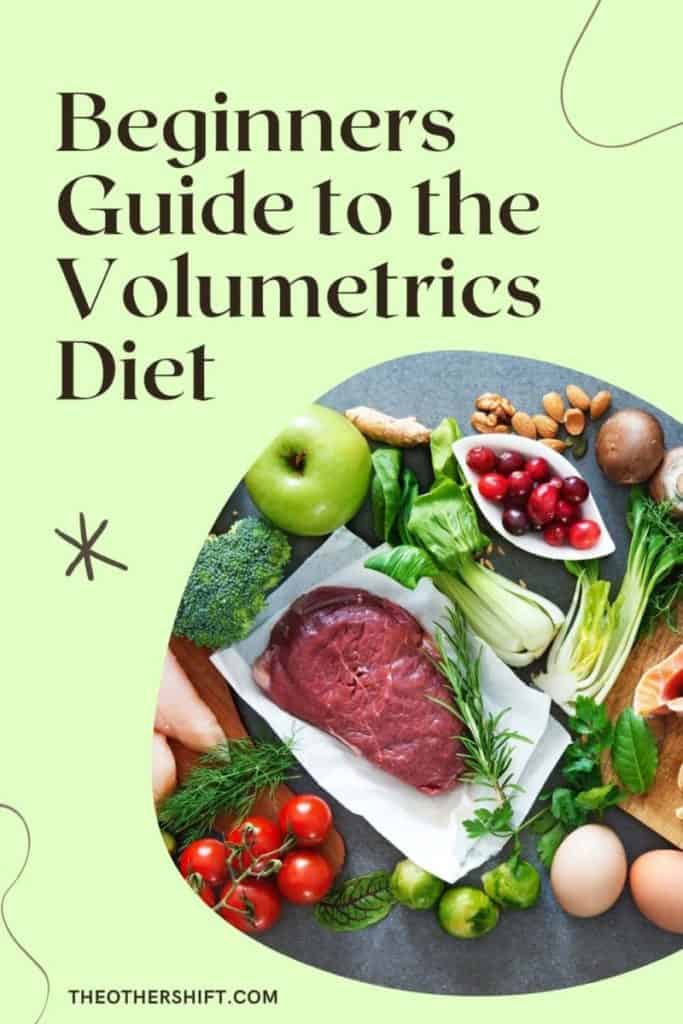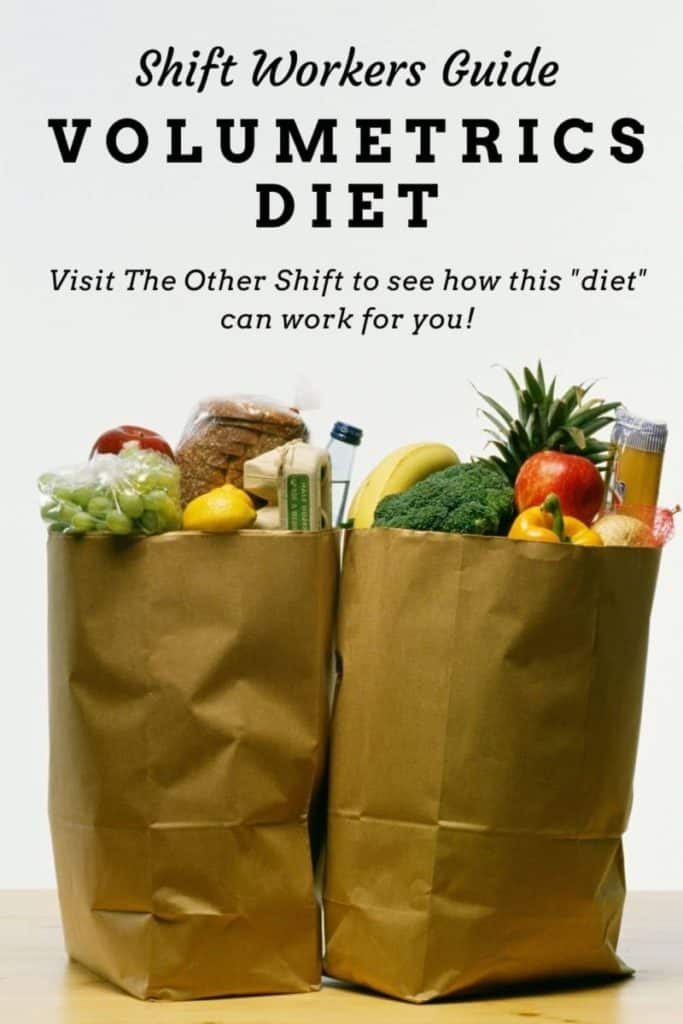If you’re tired of food restrictions and counting calories the Volumetrics Diet might be a fantastic, healthy, option for you. In fact, despite being called a “diet,” the Volumetrics Diet is more of an approach to eating than a diet, and it boasts a number of benefits for shift workers. To make your lives easier, we have done the research for you and created this pros and cons list to help you decide if the Volumetrics Diet will fit your lifestyle.
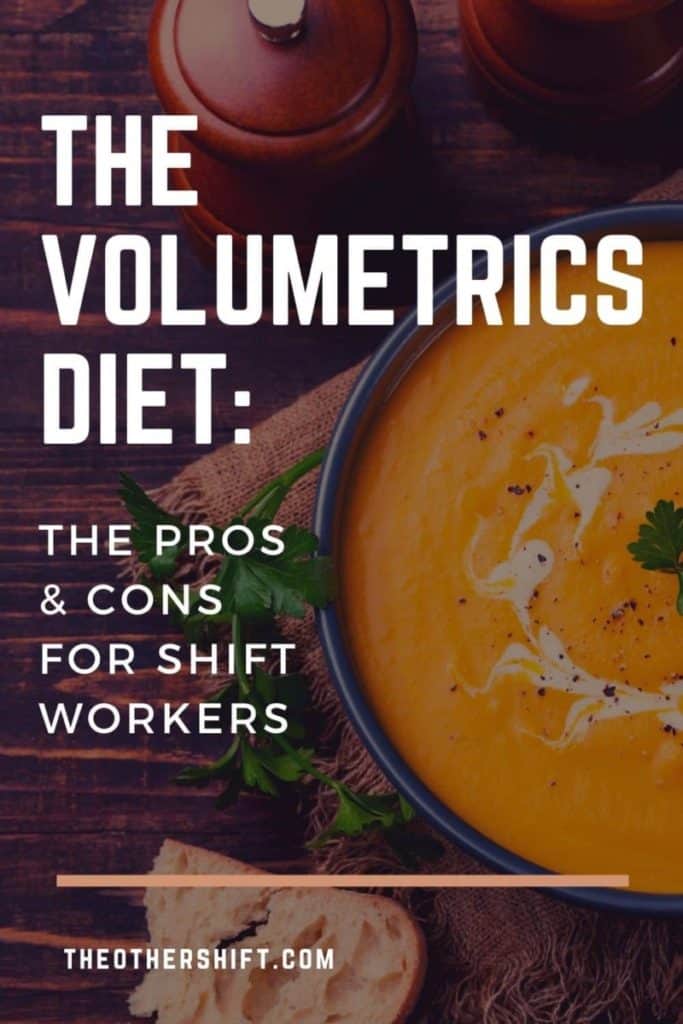
The pros of the Volumetrics Diet for shift workers include its flexibility, health benefits, ability to satisfy hunger, and the low amount of effort required to follow its recommendations. As for the cons of the Volumetrics Diet, it can take longer to see results, compared to more restrictive diets.
Shift work is hectic, and it can be hard to stick to diets that require you to measure food, count calories, or eat within set timeframes. The Volumetrics Diet is certainly more flexible, will give you ample opportunity to make food choices on the go, and will ensure that you don’t have to work hungry. All you need to know is written below, so enjoy the tips and tricks and assistance for making the Volumetrics Diet a part of your shift-work lifestyle.
History of The Volumetrics Diet
The Volumetrics Diet was developed by Penn State professor Barbara Rolls.
It works because it favors food that contain a high volume of water, which helps you stay hydrated, feel full, and consume fewer calories.
The basic organization of the diet groups foods into four categories, which you will select from when planning your meals. Dr. Rolls’ book, The Ultimate Volumetrics Diet, is the authority on following the Volumetrics Diet and we highly recommend it if you are serious about trying it. See it here on Amazon.
The Four Categories of Food
The Volumetrics Diet is perhaps the only diet that encourages you to eat more food in order to lose weight. Yes, you read that right!
On the Volumetrics Diet you are going to consume a higher volume of food than you are probably used to eating on a diet, but you will be focusing on foods that have a lower energy density.
Low-energy density foods have high nutritional value but are low on calories, whereas high-energy density foods contain more calories. The Volumetrics Diet organizes foods on an energy-density spectrum into four categories, as follows.
Category One: Contains foods with the lowest energy density
This category includes non-starchy fruits and vegetables, non-fat dairy and broth-based soups.
Examples include; strawberries, melons, broccoli, mushrooms, skim milk and soups like pho. Think any foods with high water content. Water is considered the “magic ingredient” of category one foods.
Category Two: Contains foods with low energy density
This category includes starchy fruits and vegetables, grains, low-fat dairy products, legumes and low-fat meats.
Examples include, brown rice, potatoes, apples, lean ground turkey, 1% milk, and oatmeal. This category also includes low-fat mixed dishes like chili.
Category Three: Contains foods with moderate energy density
This category includes meats, high-fat dairy products, breads and other high-fat items.
Examples of this category include, salad dressings, cheeses, pizzas, and fatty meats like bacon. This group also includes dessert items like cake and ice cream.
Category Four: Contains foods with high energy density
This category includes oils, butter, nuts, candy, fried food and other extremely high-calorie foods.
Examples of this group include, olive oil, fried chicken, chocolate, cookies, crackers, and chips.
(Source for this organization: WebMD)
VIDEO – For a quick explanation of the Volumetric diet, check out this video below.
Planning Effective Meals on the Volumetrics Diet
When planning meals following the Volumetrics plan, you will focus on eating the most foods out of categories one and two. Category three foods should be consumed in small portions, while category four foods should be eaten sparingly.
Keep in mind that you should be incorporating foods from all four categories into your diet.
Some of the foods in category four are even critical for your health. Oils, for example, are necessary for your body to absorb oil-soluble vitamins.
Additionally, nuts are a wonderful source of healthy fats, which promote healthy brain function. Working with a dietician is recommended, any time you start a new diet plan. They will help guide you to make sure you do not become deficient on any essential vitamins or nutrients.
The beauty of the Volumetrics Diet is its flexibility. Unlike with other diets, you may eat whenever you need to, but it is suggested that you plan three meals, two snacks, and a desserteach day.
Typically, when planning meals, we give priority to our protein sources. Meaning, we tend to think of chicken, fish, beef, or tofu as the “main” element of our meals and will often view fruits and vegetables as “side” items. The Volumetrics Diet will have you reconsidering this.
Since most protein sources are in category two, or three, you may want to plan your protein around your vegetables instead, in order to maximize your group one foods.
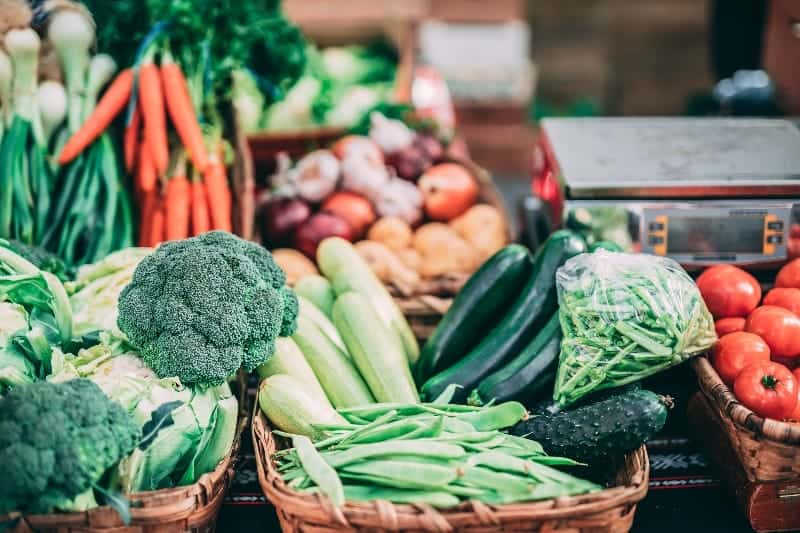
Pros and Cons of the Volumetrics Diet for Shift Workers
Diets that promise weight-loss, health benefits and energy boosts, may sound like a new lease on life for hard-working people in shift-work jobs. But diets all have their benefits and their challenges, even the Volumetrics diet. Here we have provided you with the pros and cons.
Pros of the Volumetrics Diet
Always start with the positive, right? Here is a list of what we think the pros of the Volumetric Diet are for shift workers.
- It’s Easy: This diet is easy to understand.
- It’s Low Effort: This diet does not require you spend time counting calories or weighing food.
- It’s Flexible: This diet allows you to eat at any time of the day. (But you should check out this post to make sure you don’t become overwhelmed with nasuea and bloating while working nights – What Causes Night Shift Nausea and How to Finally Beat It)
- It’s Unrestrictive: No food is off-limits, so you can actually eat cake at Linda’s retirement party.
- It’s Inclusive: You can make this diet Vegetarian, Vega, Halal, Kosher, etc. to suit your needs.
- It’s Cheap: You don’t have to pay a membership fee, just go buy your groceries.
- It’s DIY: No meetings, no coaches. But there is a Facebook Group!
- It’s Healthy: This diet plan is great for those struggling with hypertension, heart disease, diabetes, etc. (More on this below!).
Overall, we think this diet could work really well for people in shift-work jobs but there are always two sides of the coin.
Cons of the Volumetrics Diet
There are some notable draw-backs to the Volumetrics Diet. Here are the ones we can think of.
- It might be too low fat: Because the diet relegates nuts and oils to category four you will have to pay close attention to your healthy fat levels. Cutting healthy fats out entirely can have a detrimental impact on your neurological and cardiovascular health.
- It will be more difficult to dine out: You might have to be that person and ask for tons of substitutions when you go out to eat. If that’s the case, we recommend tipping well.
- It takes time: Volumetrics is not a get-fit-quick scheme. It is a guided lifestyle change and it will take longer for you to see weight-loss results.
- It has to be long-term: If you want to keep the weight off, you will need to stick to the Volumetrics way of eating long-term. If you return to eating off-balance the weight will come back.
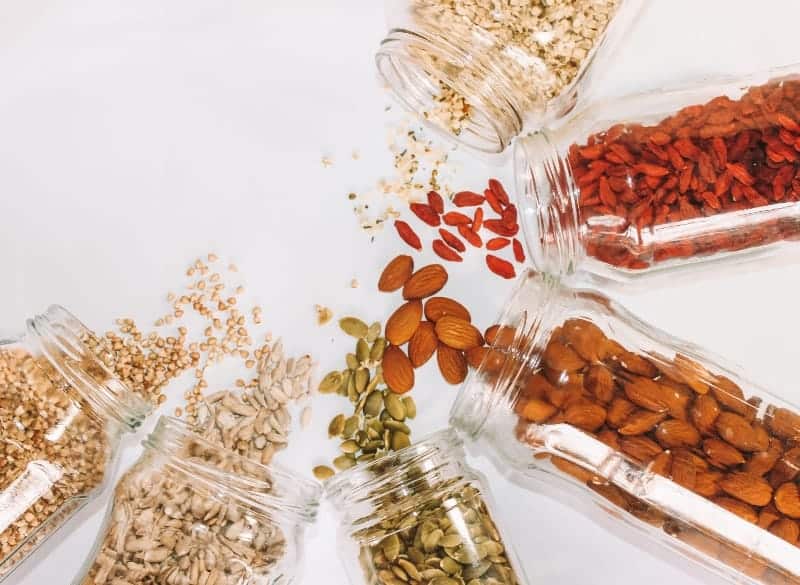
Other Things to Keep in Mind
We came across a few other details about the Volumetrics Diet that we think you should know before deciding to commit to this plan, but they do not necessarily qualify as either pros or cons. Depending on your preferences, these details could make or break Volumetrics for you.
You will eat a ton of soup: If you love soup this probably sounds wonderful. But if you dislike soup, this could become a challenge for you as you progress with the Volumetrics diet.
Soup is a staple food for the Volumetrics Diet, especially broth-based dishes, because they consist of mostly group-one ingredients.
You will eat tons of fruit and veggies: If you are not accustoming to eating vast quantities of fruits and vegetables this will be a transition for you.
You will need to learn how to cook and prepare fresh produce in ways that keeps it interesting. Also, if you struggle with conditions like Irritable bowel syndrome (IBS), you may need to pay closer attention to your fiber intake.
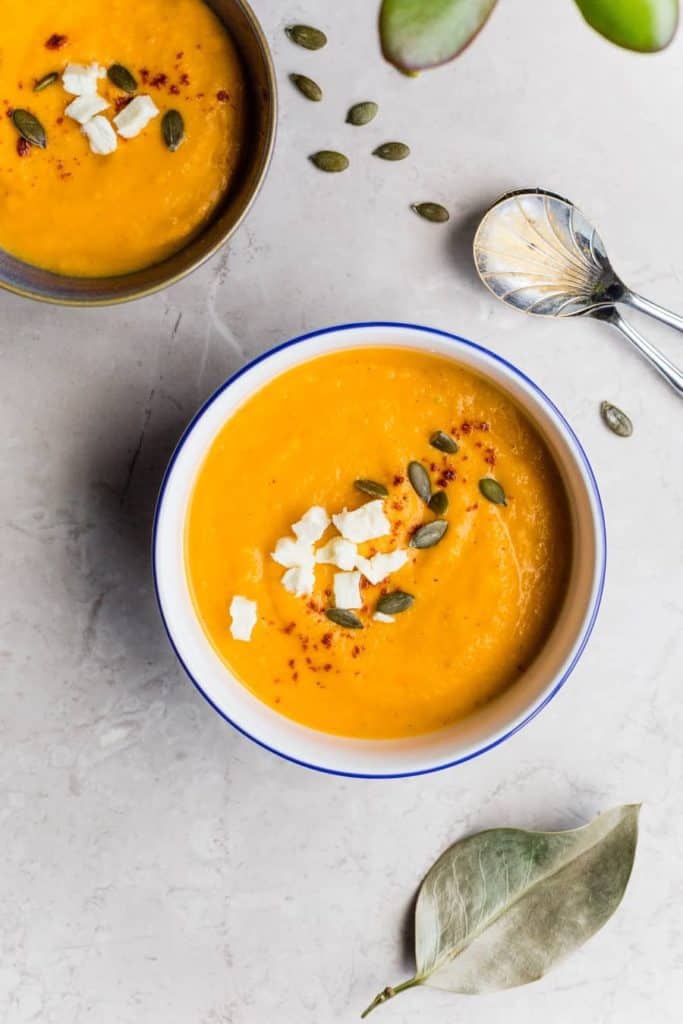
Data and Results
The Volumetrics Diet is looking pretty good on paper, but have real people experienced results? Yes! Studies show, the Volumetrics Diet has produced promising weight-loss results and has even been demonstrated to help manage certain health disorders.
Volumetric Diet Weight Loss Results
Several studies have shown significant weight loss results among patients who prescribed to the Volumetrics Diet. In 2014 Drexel University published findings that attributes “superior outcomes” among those participants who followed a Volumetrics meal plan (Source).
In a 2007 study by the American Journal of Clinical Nutrition, a study of 97 obese women, showed that the women randomly assigned to follow the Volumetrics Diet lost three more pounds, on average, then their counterparts following alternative diets. (Source).
More recently, in 2016, researchers conducted a comprehensive review of over thirteen studies dealing with the Volumetrics Diet. This research was published in the April volume of the journal Nutrients and articulated the link between low energy density foods and weight loss (Source).
Furthermore, the doctor who developed the diet is credible also, having published more than 200 research articles to back up her plan (Source).
Which is to say, you can feel confident that this diet is reputable. In fact, Rolls co-authored a study that was published in the European Journal of Nutrition. This study took a close look at the eating habits of over 9,500 adults and it discovered that adults with eating habits similar to those prescribed by the Volumetrics Diet, tended to have lower BMIs, smaller waist sizes and were at a lower risk of obesity (Source).
Put simply, the US News, ranked the Volumetrics Diet #2 in Weight-Loss Diets (Source).
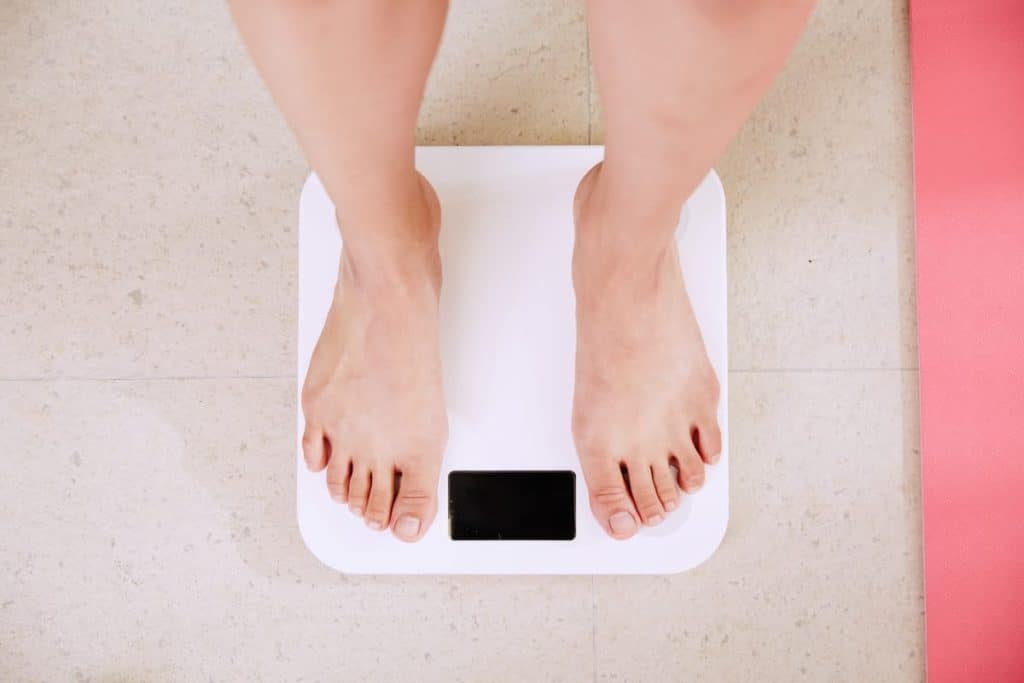
Health Benefits
In addition to weight loss benefits, the Volumetric Diet can be seen as a useful management strategy for adults struggling with diabetes, high blood pressure, heart disease, and sleep disorders (Source). Some of these issue can be common amongst shift workers and those working nights. See – Does Night Shift Shorten Your Life? 10 Impacts of 3rd Shift
The Volumetrics diet was ranked #6 among diets considered good for people managing diabetes (Source). This is quite believable since foods known to complicate diabetes are relegated to categories 3 and 4, which are meant to be consumed only sparingly and in small proportions.
The diet was rank #13 among “heart healthy” diets (Source). We think this diet could become even more beneficial to those with cardiovascular concerns if special attention is paid to incorporating enough healthy fats.
The general structure of the Volumetrics Diet would need to be altered slightly to accommodate this, but the guiding principles of the plan will point you in the right direction.
Incorporating the Volumetrics Diet into Your Shift Working Lifestyle
Now that you have an idea of how the Volumetrics Diet works, the pros and cons it presents for shift workers, and the results you can expect, let us turn to ideas and suggestions for incorporating the Volumetrics Diet into your shift-work lifestyle.
Strategies for Shift Workers
What is the best strategy for incorporating the Volumetrics Diet into a busy life? Two words, “meal prep”! The key to staying healthy when you have a hectic work-life schedule is to plan ahead.
The more you can do ahead of time the less stress you will have to cope with when it comes time to implementing your new lifestyle on the job.
We highly recommend using a meal planning worksheet to help you stay organized. You can even use the planner to write out how each of your meals will fit into the Volumetric structure, like we have done below.
Sample Volumetrics Menu
To help illustrate how the Volumetrics Diet could work for shift workers, here is a menu following the Volumetrics guidelines. We designed this menu with a flight attendant in mind but we’re confident that if this example can work for flight crew, it can work for a wide range of shift workers.
Breakfast: Overnight Oats Parfait
Overnight night oats are a hit in the healthy eating genre and they’re very easy to adapt to a Volumetrics approach. Let’s use this recipe and break it down into our food categories.
Category one: skim milk, blue berries, peaches, strawberries
Category two: oats, chia seeds,
Category three: Greek yogurt
Category four: honey
As you can see, the bulk of the volume of this meal comes from category one foods but it contains enough of the others to ensure your body is well fueled to start the day.
Bonus for shift workers, you make this at night and toss it in the fridge to combine and you can easily grab it to eat on the go as you rush out the door to work. It also keeps well in a cooler. I recently discovered the Energify Vacuum Insulated Food Jar after a fellow nurse sat next to me in the tea room. It’s worth checking out on Amazon and taking a look at the reviews. Not bad $20 I think.
Lunch: Chickpea Salad
This salad seems like it was made for the Volumetrics diet! Let’s take a look at the food breakdown.
Category one: Onions, Tomatoes, Cucumber
Category two: Chickpeas/Garbanzo Beans, Avocado
Category three: Feta Cheese
Category four: Olive oil
Again, the majority of the ingredients fall into categories one and two. It is a healthy salad sure to help keep you feeling full.
If you’re packing your lunch for work, we do recommend keeping the olive oil/dressing separate from the other salad ingredients until you are ready to eat. This helps keep the vegetable from becoming soggy.
Dinner: Pho Inspired Chicken Noodle Soup
Pho is a Vietnamize broth-based soup that usually features vegetables, lean meats, and rice noodles. This Pho inspired Chicken Noodle Soup lends itself well to the Volumetrics Diet. Here is the breakdown:
Category one: Chicken Broth, Bok Choy, Apple Cider Vinegar, Soy Sauce, Carrot
Category two: Corn, Ginger, Chicken breast
Category three: Soba Noodles
Category four: sesame oil
This recipe is fantastic because it proves that broth-based soups do not have to be boring. It is also surprisingly easy to pack and reheat in the microwave.
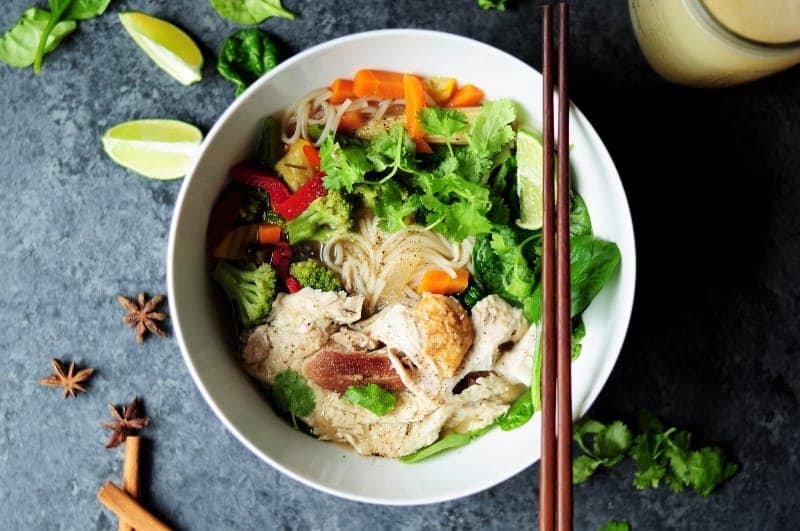
Snack One: Carrots, Whole-grain crackers and Hummus
This snack packs a satisfying church to substitute the chips you might feel incline to reach for in the break room. Plus, it is a well-rounded snack.
Category one: Carrots
Category two: Garbanzo beans (contained in the hummus)
Category three: whole grain crackers
Category four: Olive oil (contained in the hummus)
Pro tip: They now make chocolate-flavored hummus if you have a sweet-tooth! it sounds a bit odd but it’s very yummy on strawberries.
Snack Two: Mini Rice Cake Pizzas
These can be sweet or savory. Think rice cakes with a little tomato sauce, cheese and olives, or strawberries on top of whipped cream cheese.
Category One: Tomato sauce/Olives or Strawberries
Category Two: Rice Cakes
Category Three: Mozzarella or Whipped Cream Cheese.
Category Four: None.
This snack might be an at-home snack that is quick to put together right after you get off work.
Dessert: Apple Donuts
Yes, you get to eat dessert! But it doesn’t have to be unhealthy! Try these Apple Donuts, the peanut butter ones are classic
Category One: None
Category Two: Apples
Category Three: Peanut Butter, Crushed Nuts
Category Four: Chocolate, Sprinkles.
Don’t panic because there aren’t any category one foods in this recipe. The Apples are a great base and still make up the highest volume of the dessert. Besides, you know, an apple a day…
The point of this example menu is to show that you can be creative while on the Volumetrics Diet. Because no food is strictly forbidden you can mix and match foods to keep things interesting as long as you give priority to those low energy density foods in the first and second categories.
We hope you will have some fun with this diet.
Related post: 12 Valuable Meal Prep Tips for Busy Shift Workers

The Volumetrics Diet Out-to-Lunch
When it comes to meal prep, sometimes the best laid plans of mice and men often go awry. We get it. Take a deep breath, simply knowing how the Volumetrics Diet is organized, however, will go a long way in shaping healthy food decisions when you happen to be out and about.
As we did mention above in the pros and cons section, eating out will be more challenging when you are following the Volumetrics Diet. To help keep yourself on track, we recommend strategizing your meals ahead of time. Especially if you know you are going to be going out to eat.
One approach to strategizing your meals when you are dining out could be to use your meal planner. If you know where you are going ahead of time, you can spend time looking at their menu online to plan out your order. But don’t stress if you spontaneously find yourself at an unfamiliar restaurant.
You’ll be golden as long as you can think through the diet’s structure and find something that emphasizes group-one foods.
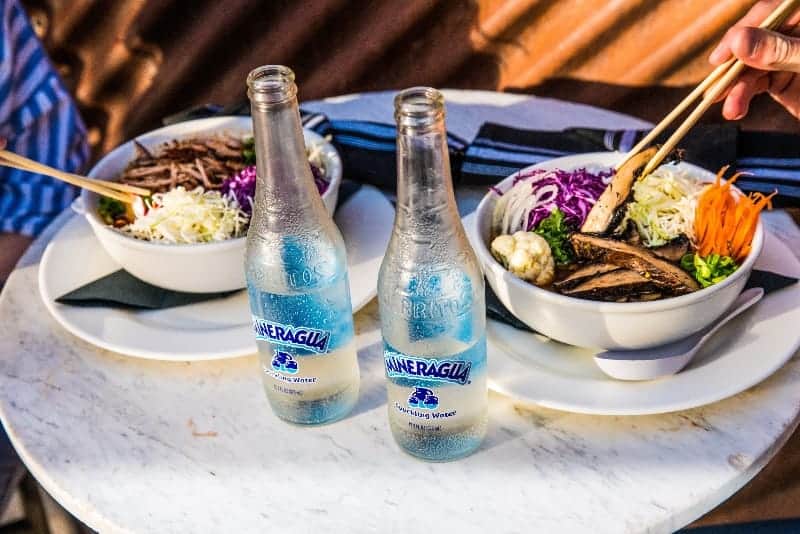
The Final Word on the Volumetrics Diet for Shift Workers
We think the Volumetrics Diet is a great option for people with shift-work schedule. It offers plenty of flexibility and can be adapted for busy, on-the-go lifestyles. It will not let you go hungry at work and will go a long way to helping you fuel your body and provide enough energy to get you through the long shifts.
As always, you should talk to your primary care physician before starting a new diet plan. We also highly recommend consulting a dietician, so they can monitor your diet progress and make sure you are getting what you need from your food.
But the science behind this diet is sound, and the studies demonstrate promising results. So, you can feel confident bringing this proposal with you to your healthcare provider.
We hope this article has helped empower you to make healthy choices. Shift-work is demanding, and you need your body to be well-cared for to keep up with your job and lifestyle.
The Volumetrics Diet is a great option and we hope you have the information you need to make an informed decision about incorporating it into your lifestyle.
Cheers,

Resources Sources:
US News. “Volumetrics Diet.” Health. Web.
Zelman, Kathleen M. and Lisa Schweitzer. “Volumetrics.” Nourish by WebMD. Feb. 19, 2019. Web.
Food Insight. “The Basics of the Volumetrics Diet.” Food Insight. Jun. 26, 2019. Web.
Hughes, Locke, and Alexis Jones. “What Is the Volumetrics Diet – And Can It Help You Lose Weight?” Women’s Health. Mar. 31, 2020. Web.
Cherry, Renee. “What Is the Volumetrics Diet Plan and How Does It Work?” Shape. Feb. 10, 2019. Web.


